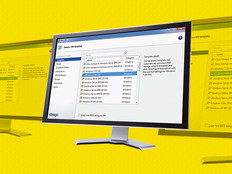vSAN Brings Scalability, Management and Optimization
Simplicity is the calling card of vSAN. This software makes deploying and managing data center infrastructure simpler and more effective. The fact that vSAN can work with nearly any commodity hardware gives data center administrators extraordinary flexibility in architecting their environments. Moreover, with features such as self-discovery of new nodes, vSAN allows for rapid expandability, helping organizations to scale incrementally and avoid large upfront purchases of hardware. While compatible with hyperconvergence-ready nodes, vSAN can also be used with more standard equipment, which can help organizations to minimize their licensing costs.
The integration of vSAN with other VMware components enhances its powerful features. For example, by combining vSAN with VMware Site Recovery Manager and vSphere Replication, organizations can orchestrate and automate their disaster recovery operations. Other VMware tools, such as VMware vRealize Operations, work with vCenter management software to provide visibility into a vSAN deployment for both monitoring and analytics. Similarly, vSAN Health Service works with vCenter to perform hardware compatibility checks, performance monitoring, storage capacity reporting and server diagnostics.
The software also makes data center operations more efficient and consistent by taking routine tasks out of the hands of administrators. With vSAN, common management tasks are automated, and storage resources are automatically balanced, helping to both optimize efficiency and reduce the time needed to manage the solution.
Flash storage is an essential element of the storage infrastructure that vSAN manages. All vSAN clusters leverage flash storage, but organizations can choose between all-flash and hybrid setups, depending on their budgets and performance requirements. An all-flash vSAN incorporates flash throughout the solution, resulting in better performance. In a hybrid vSAN, flash is used at the caching layer, with spinning disk storage used for capacity. The software can also improve flash storage performance by using built-in caching on server-side flash devices to minimize storage latency, which can increase the number of input/output operations by as much as 50 percent.
MORE: Shop vSAN from VMware now.
Specifications
Hardware host requirements:
• 1GB network interface controller required; 10GB recommended
• SATA/SAS HBA or RAID controller
• At least one flash caching device and one persistent storage disk (flash or HDD) for each capacity-contributing node
Cluster size: Minimum of 2 hosts; maximum of 64 hosts
Encryption: FIPS 140-2 validated










